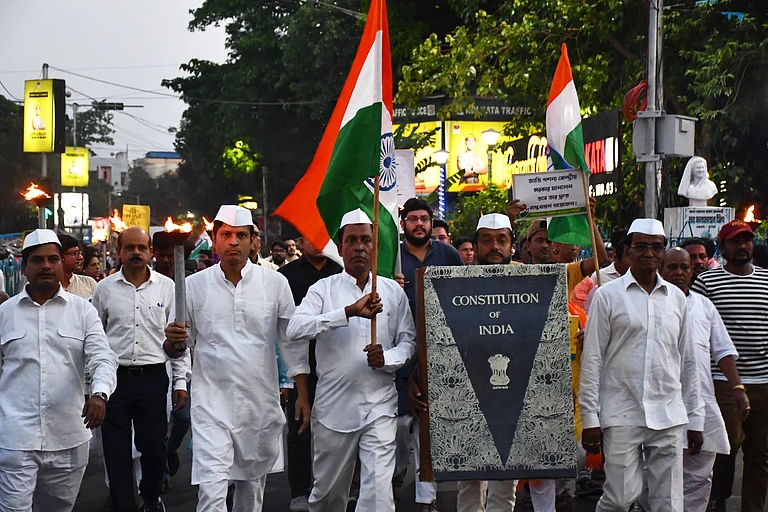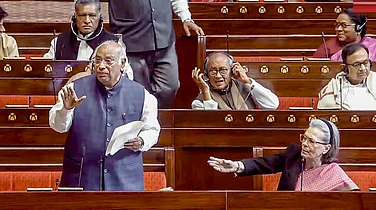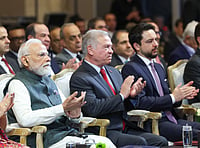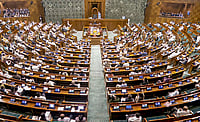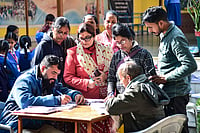
India’s Constitution defines government structure, distributes powers, guarantees fundamental rights, and outlines citizens’ duties, balancing freedom with responsibility.
Despite threats like the Emergency (1975–77) and ongoing social and political inequalities, the Constitution has endured, safeguarded by judicial oversight and active civic engagement.
Beyond liberty and equality, fraternity—the principle often neglected—requires daily practice of solidarity, moral responsibility, and inclusive citizenship to realise the Constitution’s vision fully.
India’s Constitution is more than a legal document; it is the blueprint of the nation’s democracy. It defines the structure of government, balances powers between the Union and the states, and guarantees fundamental rights to protect citizens’ freedoms. It also lays down the directive principles of state policy, guiding governance towards social and economic justice, and fundamental duties, reminding citizens of their responsibilities.
Remarkably, India’s Constitution is the longest written constitution in the world, drawing inspiration from countries including the United Kingdom, United States, Ireland, and Canada. The preamble declares India a “Sovereign, Socialist, Secular, Democratic Republic,” reflecting the nation’s core values.
Constitution Day, officially observed since 2015, focuses on constitutional literacy and civic awareness. Schools and colleges hold readings of the preamble, essay competitions, and seminars to educate students about their rights and duties, while public campaigns encourage active participation in democratic processes.
A unique feature of the Constitution is its balance of rights and responsibilities. Citizens enjoy fundamental rights, which protect freedoms and dignity, while fundamental duties guide ethical and civic behaviour. Fundamental rights (Part III, Articles 12–35) guarantee equality before the law, freedom of speech, and the right to education. They are justiciable, enforceable in court, and aim to shield citizens from state excesses.
By contrast, fundamental duties (Part IV-A, Article 51A) outline citizens’ responsibilities, including respecting the Constitution, promoting harmony, safeguarding the environment, and protecting national heritage. Though non-justiciable, they are morally binding, encouraging citizens to contribute positively to society. In essence, rights empower citizens, while duties remind them to act responsibly, ensuring democracy functions ethically.
India’s Constitution has faced significant challenges, most notably the Emergency (1975–77), when fundamental rights were suspended. Conflicts over federal powers, attempts to undermine secularism, and social pressures have also tested its principles. Yet its resilience, reinforced by the Supreme Court’s Kesavananda Bharati judgment (1973) and the “basic structure doctrine,” ensures its core principles cannot be destroyed, even by constitutional amendments. Vigilant citizens and democratic institutions continue to safeguard it.
On November 25, 1949, B.R. Ambedkar concluded his final address to the Constituent Assembly with a warning: “How long shall we go on denying equality in our social and economic life?” His words remain agonisingly relevant 76 years later. Constitution Day should not be mere ritual; it should serve as a moral provocation, reminding us that equality, liberty, and fraternity remain dreams for many Indians.
However, a striking contradiction remains. While constitutional ideals are frequently discussed, daily practices often fall short. Questions around citizenship increasingly hinge on religion, and affirmative action is debated rather than fully upheld. These realities reveal a deeper problem: the Constitution’s principles struggle against majoritarianism and persistent social inequalities.
For fostering constitutional patriotism, a loyalty rooted in shared values rather than religion or community, is essential. This demands more than legal adherence; it calls for a shift in mindset and behaviour. Of the three core principles in the preamble, fraternity is the most neglected. Without it, liberty and equality risk becoming hollow ideals, and freedom can turn self-serving.
Fraternity is not just tolerance or recognition of diversity; it is the everyday practice of solidarity, acknowledging everyone’s equal moral worth and rejecting hierarchies. When some festivals are celebrated widely while others go largely unnoticed, it exposes the gap between principle and practice. True fraternity requires effort, vigilance, and the courage to challenge societal norms that undermine it.
The opening words of the Constitution of India declare: “We, the People of India, having solemnly resolved to constitute India into a sovereign, socialist, secular, democratic republic and to secure to all its citizens justice, social, economic and political; liberty of thought, expression, belief, faith and worship; equity of status and of opportunity; and to promote among them all fraternity, assuring the dignity of the individual and the unity and integrity of the Nation…do hereby adopt, enact and give to ourselves this Constitution.”
Today, these principles are under pressure. Justice has become less accessible and more costly, fundamental freedoms are increasingly constrained, social and economic equality is weakening, and rising intolerance and polarisation threaten the spirit of fraternity.










